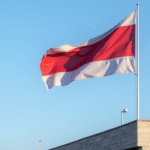Introduction
The oceans, a global public good of the highest order, are finally receiving the attention and governance they deserve. This progress is being made through the United Nations’ (UN) High Seas Biodiversity Treaty (BBNJ), also known as the High Seas Treaty. Adopted by the UN in June 2023, it has reached the threshold of ratification following the Ocean Conference in Niza, France, sponsored by the French government. The conference was a diplomatic success for Emmanuel Macron, with over 60 heads of state in attendance and around 190 ministers, showcasing a growing political and diplomatic commitment. More than 50 countries have ratified the treaty (Mexico being an exception), though 60 are needed for its entry into force. Nearly 65% of the world’s seas lie beyond national jurisdictions, such as territorial waters and exclusive economic zones, making them public goods without proper institutionalization or regulation.
The High Seas Treaty: A Beacon of Hope
The High Seas Treaty establishes the first legal framework for creating Marine Protected Areas in international waters or beyond the jurisdiction of states. At the Niza conference, which concluded recently, there was a significant push for the BBNJ or High Seas Treaty. Eighteen new countries ratified the treaty, potentially bringing it into force by September 2025. The conference reaffirmed the goal of protecting at least 30% of the oceans by 2030 and pledged new Marine Protected Areas, particularly from France, Greece, Samoa, and Colombia. Mexico, however, did not commit to creating a large Biosphere Reserve in the Sea of Cortés, which is under critical pressure.
Key Achievements in Niza
- 37 countries, including France, Brazil, Canada, and Spain, committed to preventing deep-sea mining until clear international regulations are in place.
- Insufficient financial commitments (approximately $100 million) were pledged to developing countries.
- Initiatives were launched to curb destructive fishing practices, such as bottom trawling, though a ban was not agreed upon.
- New marine science and technology platforms, as well as scientific cooperation initiatives, were introduced.
- Negotiations for the Global Treaty against Plastic Pollution advanced, with the next round taking place in Geneva in August.
- Progress was made on equitable benefit-sharing criteria for marine genetic resources.
- Procedures for environmental impact assessments of activities like deep-sea mining and industrial fishing were established.
Challenges in Ocean Governance
Negotiating ocean governance beyond national jurisdictions presents a monumental diplomatic challenge. Achieving consensus among nearly 200 governments for a single regulatory code is difficult. Aligning the interests of small island states, countries with large industrial fishing fleets, and conservation NGOs requires significant time and effort. Additionally, institutional governance structures must be designed and built with sufficient political legitimacy, scientific and technical capabilities, and adequate financing. The lack of engagement or sabotage from the current U.S. administration further complicates matters.
Strengthening National Marine Conservation Policies
Alongside the High Seas Treaty, countries must commit to strengthening national marine conservation policies. This includes allocating budgets, personnel, equipment, institutional frameworks, regulatory systems, and establishing and managing large Marine Protected Areas. Mexico’s creation of the Revillagigedo Great Marine Park in 2017, spanning 15 million hectares and prohibiting all fishing, serves as an example.
Key Questions and Answers
- What is the High Seas Treaty? The High Seas Treaty, or the United Nations’ High Seas Biodiversity Treaty (BBNJ), is the first legal framework for creating Marine Protected Areas in international waters or beyond national jurisdictions.
- How many countries have ratified the treaty? More than 50 countries have ratified the treaty, though 60 are needed for it to enter into force.
- What was achieved at the Ocean Conference in Niza? The conference reaffirmed the goal of protecting at least 30% of the oceans by 2030, launched new marine science and technology platforms, advanced negotiations for a Global Treaty against Plastic Pollution, and made progress on equitable benefit-sharing criteria for marine genetic resources.
- What challenges remain in ocean governance? Negotiating ocean governance beyond national jurisdictions is complex, requiring consensus among nearly 200 governments and aligning diverse interests. Institutional governance structures must be designed and built, which is a time-consuming process.






